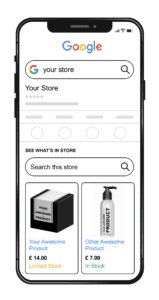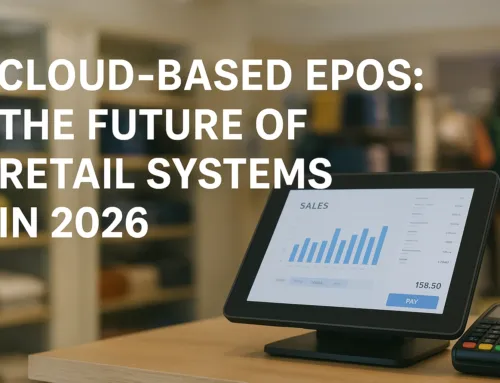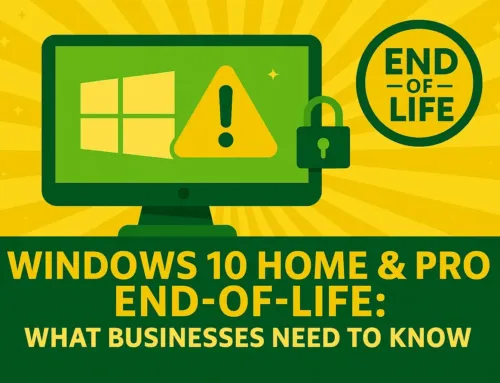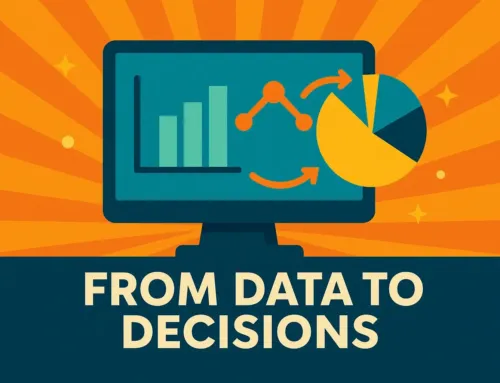Author
RMS Marketing Team
Share
4 simple steps to increase in-store footfall this Christmas
Shopping habits are ever-evolving. 87% of shopping journeys now begin online, by searching for products, skimming social media, or checking reviews before deciding to buy something. While these journeys may start online, most people still prefer purchasing in-store (and 70% of them tend to spend more in-store than online).
As a bricks-and-mortar retailer finding a way to reach these online shoppers and attract them to your physical store can seem overwhelming, with so many marketing and technology tools out there.
In this blog we’ve partnered with NearSt – a local marketing solution – to share four easy steps you can take today to drive online customers into your physical store this Christmas (without the need for a website, or any marketing know-how).
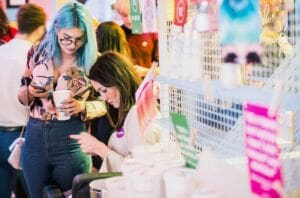
Step 1 – Claim your online business listings
The first step to get online customers in-store is making sure your physical store can easily be found online. You can do this by claiming your profile on major business listing sites, such as Google, Facebook and Yelp and making sure it has all the information customers need to visit your store, such as up-to-date opening hours, address, and telephone.
Not only does this help your shoppers, but search engines like Google list shops with regularly updated information more prominently in search results. Businesses who claim and keep their business listings up-to-date earn up to 58% more revenue.
The most important listing you want to claim is your Google Business Profile, but you may also want to consider platforms like Yelp, Instagram, Apple Maps and Foursquare. Especially as these platforms are finding new ways to make local businesses more easily discoverable for local consumers.
Top tip: Adding images of your store is a great way to boost your listing as research shows 90% of people are more likely to choose a business that has photos on a search/map results page.
Step 2- Show your products online
Research shows that up to 83% of shoppers use online search before making a purchase in-store, for example to confirm a product’s availability. Allowing customers to browse your store’s full in-store inventory on popular platforms like Google, Facebook and Instagram is a great way to ensure customers choose your shop over an online competitor.
A key tool for showing local shoppers what you stock is called Google’s See What’s In Store (or ‘SWIS’). Found in your Google Business Profile, SWIS appears underneath your store information. Displaying images and detailed descriptions about your in-stock products, customers are able to browse through your product range, or dive in and search for something more specific from your shop.
In addition to helping prospective customers see if you’re selling the products they’re looking for, listing your inventory online also helps your business rank higher in local search results. Whereas previously your store might have only shown in search results when people search exactly for your store name or the category of products you sell, Google will show your location higher up in the list for related terminology or specific searches (‘dance shoes’ for a shoe store, ‘silk scarf’ for a fashion store, ‘shovel’ for a Garden store) across all the places people search on Google, i.e. Search, Images, Shopping, Voice Assistant and Maps.
With social commerce declared one of the fastest growing trends in retail, other places you will want to show your live inventory include social platforms like Facebook, Instagram and TikTok. In addition to reaching customers in places they are already spending a lot of time and adding additional customer touch points, social platforms are also a great way to boost visibility and promote customer engagement.
Uploading and keeping your inventory up-to-date on multiple online platforms sounds like a daunting and time-consuming task, but tools like NearSt makes this super easy. Sourcing inventory information from your OpSuite Retail Management System, NearSt automatically creates product profiles and shows your live inventory across platforms like Google and Facebook without the need for any manual upload or product data entry. You don’t even need a website, and it still works.
Step 3 – Engage with customers online
With the customer journey moving online, it can be difficult to keep customers’ attention. The rise in living costs also has made consumers more selective about where they buy and more likely to purchase from brands and stores they trust and feel loyal to. But how do you foster modern customer trust and loyalty? Customer engagement – both before and after they have visited your store.
A simple, yet extremely important way to promote positive customer engagement is responding to online reviews. Responding appropriately to reviews not only creates trust with shoppers who visited your store, but also attracts new customers – with 90% of shoppers saying their buying decisions are influenced by reviews. It’s also reported that businesses who reply to over 25% of their reviews earn 35% more revenue. Online reviews make up an important part of Google’s search criteria – helping you rank higher in local search results.
Another way to boost customer engagement is direct messaging. With 53% of people more likely to shop with a business they can message directly, and 61% of people in the UK having messaged a business in the past three months, messaging on platforms like Facebook is the modern way of communicating with your customers.
Since most shopper queries relate to the products your store offers, tools like NearSt also make it possible to share product information directly in tools like Facebook Messenger and WhatsApp for Business, helping you more easily help your customers.
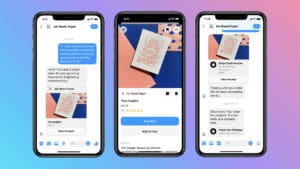
Top tip: tagging in-stock products in Facebook and Instagram posts and stories is a great way to promote your products. By linking Opsuite to Facebook via NearSt, your in-store products will be automatically available to tag in posts, Messages, and on WhatsApp.
Step 4 – Invest in targeted local ads
Now that you’ve laid the groundwork for customers who already know about your business, you’re ready to start spending a small amount on local marketing to attract nearby customers who aren’t already aware of your store.
If you’re looking to grow local awareness and footfall, Google Local Inventory Ads (or ‘LIA’) is the best place to start. Unlike Google Shopping Ads – which are available to online retailers and boost traffic to your website – Local Inventory Ads (LIAs) are reserved for retailers with a brick-and-mortar store and focus specifically on promoting in-store traffic.
While both types of ads show up at the top of Google whenever a shopper searches for a product, Local Inventory Ads specifically promotes products sold in-store, and only show up if the shopper is physically near your shop. Rather than directing them to a website to complete the purchase, Local Inventory Ads direct people to your local storefront in Google, showing information such as opening hours or distance to your physical shop.
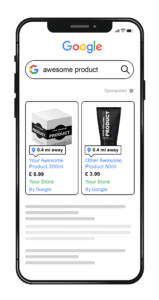
Because shoppers who see Local Inventory Ads are already in close proximity to your store and are more likely to drop by for a visit, Local Ads provide a better ROI. On average, Local Inventory Ads have a 20% higher click through rate than Shopping Ads and 1 in 7 clicks typically leads to an in-store visit. The importance of proximity also means these ads are usually cheaper to run than ecommerce related Shopping Ads which means that local shops are able to appear ahead of ads from online giants like Amazon, even with a small budget.
NearSt makes it easy for retailers using OpSuite to quickly get up and running with Google Local Inventory Ads. You simply select a budget starting from as little as £2 a day and they’ll manage all the complexity of running your ads – optimising your budget and reach automatically in the background. What’s more, you can choose your daily budget and switch them on and off when it suits you, so there’s no long term commitment.
Simpler than it seems
Getting online shoppers into your brick-and-mortar stores can be a lot simpler than it seems, and we hope these four tips will help you make the most of this Christmas shopping season.
If you want to try automatically listing your in-store inventory in Google and Facebook, you can sign up to NearSt. RMS customers who sign up before the end of November will get a free 30-day trial, so you can try listing your products locally risk-free. Find out more today.
Key Terms
Share:
Sign up now for news and special offers!
Join our Newsletter
*We are collecting your email information in order to add you to our newsletter recipient list. You can unsubscribe from our communications at any time. You can do this by contacting us or by clicking the unsubscribe button on any of our communications with you.
You can find more information about the details we hold about you and the way we use them in our privacy policy, and you can access this here or we can send you a copy.

